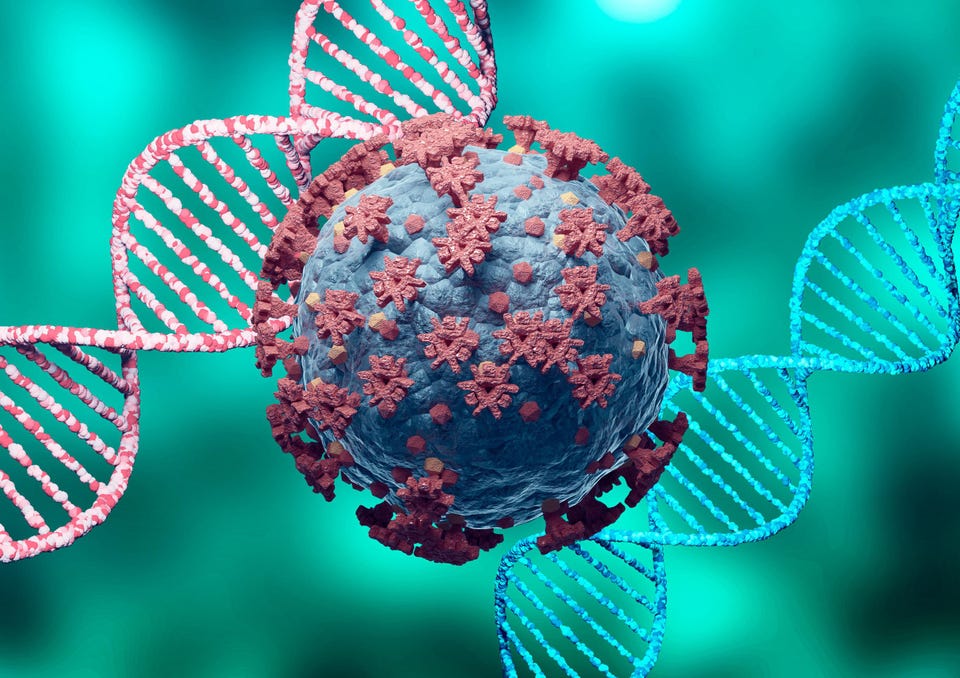Forbes Innovation Healthcare Ending The COVID-19 Emergency Must Not End Saving Lives Anand Parekh Contributor Opinions expressed by Forbes Contributors are their own. Anand Parekh is the chief medical advisor at the Bipartisan Policy Center. Following Feb 2, 2023, 05:53pm EST | Press play to listen to this article! Got it! Share to Facebook Share to Twitter Share to Linkedin Coronavirus and DNA, virus mutation.
Microscopic view. 3D rendering getty But for all the discussion about if and when to end the public health emergency, people are missing the real question: with or without an emergency declaration, how do we continue to save lives from COVID? This week saw both Republicans and Democrats shrewdly posturing over the ending of the COVID-19 national and public health emergencies. House Republicans, on a party line vote, voted to immediately end the emergency declarations while knowing that their measure would not pass through a Democratic-controlled Senate.
Prior to that move, the Biden administration preemptively moved up their announcement to end the emergencies on May 11, arguing that a plan was already in place for the federal government to transition its response. Both sides are partially correct. Yes, most of the nation has already moved on from the pandemic, but on the other hand, the emergency is not symbolic in nature.
The emergency declaration has allowed for health policy flexibilities to ensure that Americans have access to care, including COVID vaccines, tests, and treatments, and that the health care system stays afloat amid multiple health challenges. But for all the discussion about if and when to end the public health emergency, people are missing the real question: with or without an emergency declaration, how do we continue to save lives from COVID? Today, the majority of deaths from COVID are preventable and largely attributable to vulnerable Americans, such as the elderly, not being up to date with vaccinations and lacking early access to Paxlovid. Misinformation and pandemic fatigue have contributed to our losses.
COVID now ranks among the leading causes of death in the U. S. , many of which are largely preventable including heart disease, stroke, cancer, chronic obstructive pulmonary disease, and unintentional injuries such as drug overdoses.
MORE FOR YOU $100M Magic: Why Bruno Mars And Other Stars Are Ditching Their Managers This Week In Credit Card News: A Talking Credit Card; A Proposal To Drastically Cut Late Fees Valentine’s Day Gift Guide: Best Eco-Friendly Gifts Under $100 For Your Jetsetting Valentine In 2016, the Centers for Disease Control and Prevention estimated 250,000 potentially preventable deaths occur in the U. S. annually just from the leading causes of death listed above ( the agency used a simple methodology contemplating the impact if all states performed as well as the healthiest states).
The number of preventable deaths is now likely much higher, especially with the introduction of COVID. As a nation, we have long given disease prevention short-shrift and taken preventable deaths for granted. This explains why even prior to COVID, U.
S. life expectancy had been stagnant for over a decade in contrast to other comparable countries. Significant disparities exist by income, race, and geography, many of which were further exacerbated during this pandemic.
In the coming weeks and months, our continued focus needs to be on reducing preventable deaths from COVID. Ensuring Americans have access to vaccines, tests, and treatments will be especially important for those who are uninsured (their numbers will rise as states resume redeterminations of Medicaid eligibility ) and who are underinsured and face significant cost-sharing. We need to continue investing in surveillance systems that detect new variants and outbreaks early and accelerate research to develop better vaccines and treatments for the future.
Optimal indoor air ventilation policies, systems, and best practices must be scaled, and the best use of masks reassessed. And our public health system needs to be strengthened with a 21 st century workforce and data infrastructure. Individual responsibility and bipartisan policy decisions will be crucial in helping to make the healthy choice the easy choice for Americans.
We all have a role in saving lives, especially when faced with preventable deaths, such is the case with COVID. Follow me on Twitter . Check out my website .
Anand Parekh Editorial Standards Print Reprints & Permissions.
From: forbes
URL: https://www.forbes.com/sites/anandparekh/2023/02/02/ending-the-covid-19-emergency-must-not-end-saving-lives/
